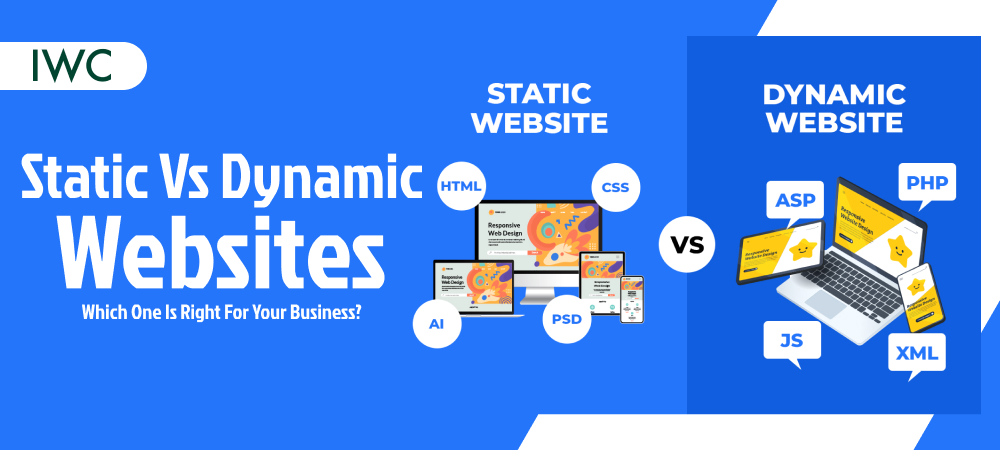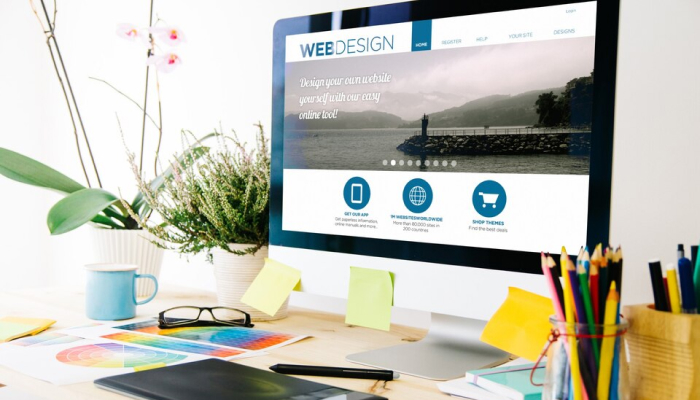
Dynamic Website Design & Development Services
Dynamic website features interactive content, databases, and user-driven elements, providing an engaging user experience and adaptability for businesses that require frequent updates.
Dynamic Website Development: Grow Your Business Fast
Investing in dynamic website development is a strategic move to enhance your business's online presence. A dynamic website will help you in bringing in and keeping users by providing an engaging, customized, and modern user experience. Allow us to assist you in creating a website that will develop with your company and satisfy your present demands as well. Get in touch with us right now to begin your path to a vibrant and successful website.
Cost of Dynamic Website in India
Explore our range of dynamic website plans designed to meet your business needs at an affordable cost.
AtIndian Website Company, we specialize in dynamic website development services in India, offering tailored solutions that bring your online presence to life.
Our cost-effective packages ensure that you get a dynamic and engaging website without breaking the bank. Elevate your online identity with
IWC's expert development services, where quality meets affordability.
| Packages | Basic | Business | Professional | Creative | Extra Creative |
|---|---|---|---|---|---|
| Price | $149 | $299 | $499 | $699 | - |
| Home Page | |||||
| Number of Pages | 5 | 8 | 12 | 15 | Unlimited |
| Design Quality | Basic | Business | Professional | Creative | Extra Creative |
| Navigation system | Editable | ||||
| Domain (Free for 1 year) | .com | .com | .com/.net | .com/.net | .com/.net |
| Web space (Free for 1 year) | 300MB | 500MB | 700MB | 1GB | 2GB |
| Number of Email Id (Free for 1 year) | 1 | 2 | 3 | 5 | 7 |
| Inquiry Page | |||||
| Secure admin panel | |||||
| Editable Content | |||||
| Blog Page | With Comments | With Comments | With Comments | ||
| Zoom gallery | |||||
| Blog Page | |||||
| Number of sliders | 1 | 2 | 3 | Unlimited | |
| Parallex | No | 1 | 2 | 3 | Unlimited |
| Menu Creation | |||||
| Free Andorid Mobile Application | |||||
| Multiple User | |||||
| Mobile Tablet Friendly Design | |||||
| Search Engine Friendly | |||||
| Forms | 1 | 1 | 2 | 2 | Multiple |
| Social media link integration | |||||
| Google Map integration | |||||
| Whatsapp chat integration | |||||
| Live Chat Integration | |||||
| Free SSL Certificate | |||||
| Onpage Optimization | |||||
| Extra Pages (Without form) | Each page $10 | Each page $10 | Each page $10 | Each page $10 | Each page $10 |
Contact Now | Contact Now | Contact Now | Contact Now | Contact Now |
Attributes of Dynamic Website Design
Explore our open roles for working totally remotely, from the
office or somewhere in between.
Cost Effective
Our dynamic website design service offers cost-effective solutions, providing businesses with the benefits of a dynamic online presence without compromising their budget.
Interactive Dashboard
We create dynamic websites with intuitive, user- friendly interactive dashboards, enabling easy content management and enhancing the user experience.
Quick Loading
Our dynamic websites are optimized for fast loading, ensuring an excellent user experience and improved SEO rankings.
Cross-Platform
Dynamic websites are designed to perform seamlessly across various devices and browsers, reaching a broader audience.
Quick Presence
We expedite the development process, ensuring a dynamic online presence swiftly for your business.
Goal Oriented
Our dynamic website designs are driven by your specific business objectives, focusing on delivering results through dynamic content, features, and functionality.
Static vs Dynamic Website Design
What's the Difference?
Factors that Affect the Cost of Developing Dynamic Websites
The dynamic website price is directly related to the aspects like the complexity of design, whether a database has to be integrated or not, which CMS choice to take, functionality of the web site, and security of it. Ongoing maintenance, updates, and advanced features like e-commerce or custom applications require extra cost. Based on these characteristics, the possible price of dynamic website goes from ₹50,000 to ₹5,00,000 and even more based on the need of the project.
Frequently Asked Questions
Dynamic Website Blogs
Static vs Dynamic Websites – Which One is Right for Your Business?
Why You Need a Dynamic Website?
8 Factors that Will Impact Dynamic Website Design Cost
Static Website
If you don’t need frequent updated then choose to go with cost effective solution
Want to discuss your website development project with Us?
Reach out to us today to discuss your dynamic website design and development project. At Indian Website Company, our website development India team is ready to provide you with a custom solution that meets your needs and helps your business grow. Contact us now to get started!


